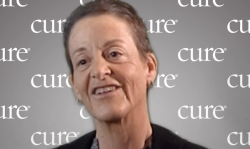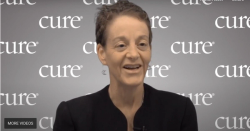- About Us
- Advertise / Support
- Editorial Board
- Contact Us
- CancerNetwork.com
- TargetedOnc.com
- OncLive.com
- OncNursingNews.com
- Terms & Conditions
- Privacy
- Do Not Sell My Information
- Washington My Health My Data
© 2025 MJH Life Sciences™ and CURE - Oncology & Cancer News for Patients & Caregivers. All rights reserved.
Novel Procedure Considered an ‘Acceptable Method’ to Preventing Transmission of Hereditary Cancer Mutations to Children

Ryan McDonald, Associate Editorial Director for CURE®, has been with the team since February 2020 and has previously covered medical news across several specialties prior to joining MJH Life Sciences. He is a graduate of Temple University, where he studied journalism and minored in political science and history. He considers himself a craft beer snob and would like to open a brewery in the future. During his spare time, he can be found rooting for all major Philadelphia sports teams. Follow Ryan on Twitter @RMcDonald11 or email him at rmcdonald@curetoday.com.
The genetic testing procedure may aid people with a history of hereditary cancer from passing those genetic mutations on to future children.
People who are at a greater risk for developing, or have previously received a diagnosis of, a hereditary cancer have an “acceptable method” available to them to identify what the chances of passing those — and other — genetic mutations on to their future children are.
The procedure, known as preimplantation genetic testing, helps identify what, if any, genetic abnormalities are present in embryos that were created during the process of in vitro fertilization (IVF).
This procedure may effectively aid people with a previous diagnosis, or risk, of hereditary cancer from passing those genetic mutations on to future offspring.
During the recent 12th Annual Joining FORCES Against Hereditary Cancer Conference, Dr. Terri L. Woodard, an associate professor in the Department of Gynecologic Oncology and Reproductive Medicine at The University of Texas MD Anderson Cancer Center in Houston, discussed the topic of fertility preservation and parenting issues that cancer survivors and previous often face. Moreover, Woodard highlighted what people should know about certain genetic testing procedures.
Increase in Genetic Mutations
Woodard noted that previous research has shown that adolescents and young adults diagnosed with cancers that are frequently associated with old age often have a higher percentage of inherited cancer mutations.
However, she explained, those rates are higher than were once thought.
In fact, Woodard cited a study of more than 1,000 adolescents aged between 18 years and 39 years and noted that the results demonstrated that approximately 21% of the participants diagnosed with early-onset cancer had a germline mutation. Only 13% of the remaining patients had a germline mutation.
“This just highlights the fact that many of these young individuals have genetic mutations that can be passed down along to their offspring,” she said. “Because these patients are younger, there are often fertility and family building issues that arise.”
Fertility and Future Family Planning Concerns
There are several genetic conditions associated with a greater cancer risk, according to Woodard. If people have any of those conditions, they are likely to want to pursue genetic testing. For instance, she highlighted hereditary breast and ovarian cancer syndrome. Woodard noted that many of these patients may experience some form of infertility at a younger age than other people. These patients also may need to undergo risk-reducing surgeries to prevent ovarian cancer.
Another condition, known as Li-Fraumeni syndrome, is associated with a greater risk for developing sarcomas, central nervous system tumors, breast cancer and gonadal germ cell tumors — all of which, according to Woodard, negatively affect a person’s fertility.
That’s why, she said, many of these individuals need to be partaking in fertility preservation conversations with their care team.
Additionally, some of these cancers may require treatment that negates a person’s ability to have children.
Fertility Preservation Methods
Woodard shared insight on some of the fertility preservation methods that people have access to. She noted that eggs, embryos and sperm can all be frozen for use later. Ovarian and testicular tissue freezing are also possibilities, according to Woodard.
Another option available to patients who require radiation to the areas surrounding their reproductive organs is gonadal shielding. In this instance, radiology technicians use protective shields to minimize radiation exposure to certain areas.
People can also go through an experimental approach known as ovarian suppression. Woodard explained that a gonadotropin-releasing hormone agonist is used in women to suppress the ovary during chemotherapy.
“The thought is that a quiet ovary is more resistant to the effects of chemotherapy than one that is actively cycling,” she said during her presentation.
She cautioned, however, that the data that are available on this approach are quite variable.
Family Building Options
There are a great range of opportunities available to patients when deciding to have a family, Woodard explained. Depending on their comfort levels, she said, options available to patients range from natural conception to IVF and plenty more.
For people who may have premature ovarian failure because of their cancer treatment, there is an option to use donor eggs, sperm or embryos. There are also gestational carriers for women who may no longer have a uterus or are deemed too high risk to carry a pregnancy to full-term.
And lastly, Woodard noted that people can pursue adoption. However, she explained, it can sometimes be difficult for people with a history of cancer to adopt.
“Sometimes adoption can be challenging for survivors of cancer because some agencies see it as too risky and do not allow those patients to have kind of the initial screening,” she said. “Asking an adoption agency, whether a cancer diagnosis will disqualify them early on, is a very important question for patients to ask.”
Genetic Testing for Future Children
Woodard concluded her discussion by reviewing genetic testing methods that are available for patients to use for assessing the possibility of passing inherited mutations down to future children.
Patients who are already pregnant may use prenatal genetic testing, she said. Prenatal screening lets the parents know what the chances are that the child would have abnormal genetics. Diagnostic prenatal tests are slightly different in that they can show if a fetus is affected with a certain disorder.
“The problem with prenatal genetic testing is that the patient is already pregnant,” she said. “If we find an abnormality, it really has some implications and has patients (making) some hard decisions on whether they would want to continue the pregnancy or not.”
For those patients who are not yet pregnant and may be considering IVF, preimplantation genetic testing is a viable option.
Woodard explained that an embryo is tested after the initial IVF prior to transplanting the embryo back into the patient’s uterus. There are several types of preimplantation genetic testing, but one specifically tests the embryo for a specific gene.
“If a woman is a carrier of a BRCA mutation, and she wants to test her embryo for that mutation, this is the type of testing we would use,” she explained.
Although some consider preimplantation genetic testing to be unethical or controversial — because some people use it for sex selection of their baby — Woodard noted it’s a viable option for many trying to start a family without passing genetic mutations down to their offspring.
“(Preimplantation genetic testing) … is an acceptable method to prevent transmission of mutations to offspring, but requires in-depth genetic counseling and support,” she concluded.
For more news on cancer updates, research and education, don’t forget to subscribe to CURE®’s newsletters here.
Related Content:



